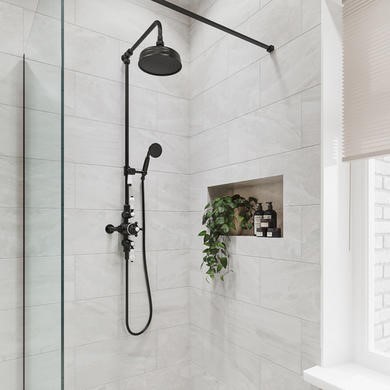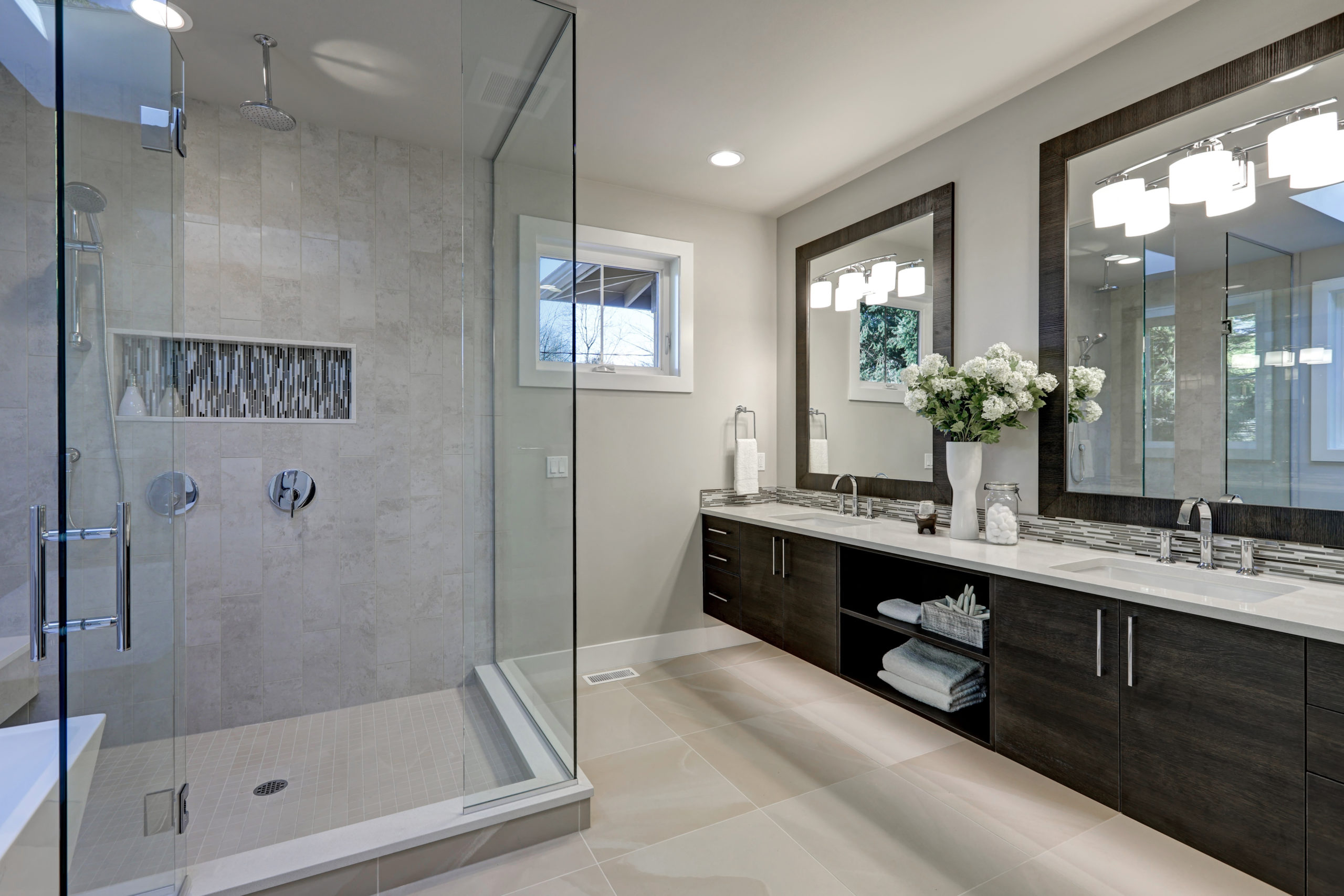Do you find yourself trying to find know-how around Simple ways to Install a Shower Cubicle on Your Own?

A successful shower installation needs cautious planning as well as a lot of work. In most cases, you will certainly require to do 3 kinds of tasks: framing walls, mounting the plumbing, and also ending up wall surfaces.
Different Sorts Of Shower Units
- Push-on Mixer: The pipe and also spray parts of the push-on mixer shower device can be linked to the bathroom faucet according to your demand, as well as the water temperature can be adjusted through the taps. Push-on mixers are cheap and extremely straightforward to mount. Nonetheless, although the pipe link is easy, it is quickly dislodged. Additionally, it is inconvenient to readjust the temperature level.
- Bath/Shower Mixer: The pipe as well as spray of this kind of shower are combined with a bath mixer faucet, and also the temperature level can be changed through the bathroom faucets. It is an extremely low-cost choice and no added plumbing is entailed. Nevertheless, the bath/shower mixers also deal with bothersome temperature level control options.
- Manual Mixer: The tube as well as spray of a hands-on mixer shower unit belong of the wall surface unit and also the cold and hot water materials are linked to a single shutoff The temperature level and stress of the water are managed through either one or a variety of handles (in much more expensive showers). Although temperature level control is much easier in manual mixer kinds, they are much more pricey than the formerly mentioned mixers. They likewise require added plumbing of cold and hot water supply pipelines.
- Thermostatic Mixer: The hose and also spray of this shower type belong of the wall surface unit and also the hot and cold water products are linked to a solitary valve here also. It is total with an integrated stabiliser to self-adjust the water temperature and to avoid it from becoming as well hot. Among the biggest benefits of a thermostatic mixer shower type consists of convenient temperature level control. However, it is one of the most expensive of the various mixer options.
- Power Shower: A power shower is a solitary unit including an effective electric pump that can altering both the water stress and temperature level. This sort of shower can be fitted if there is supply of water from a cold water tank and a warm water cylinder. A power shower makes the modification of both stress and temperature level very easy. On the other hand, it is unsuitable for water warmed directly by the shower or where the water is supplied by a mix boiler under keys stress.
- Electric Shower: An electric shower is plumbed into a keys cold water supply and it heats up the water electrically. It is necessary to note that for this shower type to be mounted, the mains pressure requires to be at the very least 0.7 kg/sq cm (10lb/sq in). The system permits the temperature as well as stress to be readjusted through a handle. Versions with temperature stabilisers are better as they stay untouched by other taps somewhere else in operation within the household. A major disadvantage of electrical showers is that the control handle only allows for the choice of heats at much less pressure, or lower temperatures at a higher stress. This is bothersome in the winter season when the spray is frequently weak as well as the mains water is cooler. Nonetheless, this trouble is tackled in some models which are offered with a winter/summer setup.
A Lot Of Usual Blunders
- Going against or ignoring local code restrictions.
- Using pipes that are as well little.
- Connecting copper to galvanized without utilizing a brass or dielectric suitable in between both.
- Not making use of tape or pipeline substance at threaded joints.
- Uneven your components when mounting them.
- Not mounting an air void loading for components.
- Reducing supply stub outs also brief to mount the shutoff valves onto after the ended up wall surface remains in location.
- Not appropriately straightening tubes right into installations or stop valves. (Requiring the nut onto the compression ring at an angle when the tubing is at an angle will certainly create a leakage.).
- When transforming the water back on in your house, always run the outside hose pipe valve or flush your toilets to hemorrhage dust and also air from the lines. This particles can trigger issues in your sink faucets and other plumbing trim.
Prep work.
To start with, you have to select the kind of shower that you want to install. It is essential to ascertain whether the picked shower can handling specific systems and can regulate a secure degree of water with the boiler. A lot of shower systems nowadays are designed to be adaptable to different water pressures (such as saved hot water and also chilly mains).
It is additionally vital to take into consideration the water pressure and also the preparation of the piping and drain for the shower.
Method.
Relying on the kind of shower you wish to set up, the shower head must either be suited order to avoid its contact with the water in the bathroom below or the base tray, or it has to have a check valve.
Prior to starting, it is suggested to mark the placements of the shower head as well as control, and to intend the pipe-work included. In addition, the drain system to get rid of the waste water will certainly need to be intended. Both positions of the cable television course as well as the shower switch will certainly additionally need to be taken into consideration if an immediate or electrical shower system is being installed.
Utilize the instruction overview offered with the shower device to fit the shower control.Before fitting the pipelines that will supply the water to the shower system, it is necessary to cut off the water. In order to safeguard the pipelines, they ought to be offered a waterproof covering as well as also fitted with separating shutoffs. The pipes can after that be buried right into the wall surface as well as smudged over to neaten the overall appearance.
Fit the base tray, shower head, and installations.
Attach the primary shower control to the pipelines that will be providing the water (This might need a women screw thread adapter).
Reconnect the water system and also test the pipelines for any leaks, as some might need tightening up.
If you are mounting an electrical shower, keep in mind to turn off the electrical power supply prior to making any kind of electrical connections. As soon as these connections have been made (there need to be guidance within the instruction manual), the power supply can be switched over back on.
Adjusting Water Pressure to Fit Your Shower.
The cold water storage tank can be raised to a greater elevation (occasionally as little as 150mm (6inches)) by fitting a solid wood assistance beneath it - potentially made up of struts and also blockboards. If you choose this choice, the primary and also distribution pipes will likewise need to be elevated to meet the new elevation of the storage tank.
Conversely, a booster pump (a single pump or a dual/twin pump) can be fitted. Whichever type is selected, it needs to be attached right into the power supply in order to operate.
Piping and Drain.
It is best to utilize 15mm size supply pipelines, and also make the go to the shower as short and straight as possible so as to preserve optimal stress and also reduce warmth loss. In addition, by minimising the use of elbow joints for pipe corners, you can decrease the resistance in the flow of the supply of water. You can accomplish this by flexing the pipelines rather.
How Do You Install a Shower? Follow This Guide
Installing a Shower at a Glance
- Tools & Materials: Level, electric drill, caulk, hole saw, cedar shims, shower unit
- Step 1: Drill pilot holes
- Step 2: Prep fixture holes
- Step 3: Move unit into place
- Step 4: Caulk corners and base
- Step 5: Attach door
- Step 6: Install shower pan
Whenever plumbing is involved in a DIY project, people worry about what might go wrong. The truth is that installing a shower isn’t that complicated, and you can save a lot of money by doing it yourself. You shouldn’t need to make any alterations to your plumbing to complete the job, and most of the tools you need will be provided in your new shower kit.
Can I Install a Shower Myself?
Even if you’ve never installed a shower before, you’ll find this to be a project that is perfectly suited for DIYers with a moderate level of experience. Whether you're doing a bathtub conversion or installing a new stall, most of what you need comes in shower kits that you can purchase from a hardware store. The first thing you need to do is determine what type of shower stall you want.
Single-panel stalls are the easiest to install because they come preassembled. All you need to do is put them in place. Multi-panel showers require a few additional steps, but you’ve got more control over the appearance of your unit. Multi-panel units are also much easier to handle if you’re going to do the installation without any help.
Be sure to take all appropriate safety precautions, such as wearing eye protection and gloves. When you’re removing or installing a shower unit, you might kick up debris that could hurt your eyes. You’ll also need to work with equipment that will get extremely hot, so be sure to have safety gloves handy.
Tools and Materials
- 2- to 4-foot level
- Electric drill with a 1/8-inch drill bit
- Caulk
- 2-inch hole saw
- Cedar shims
- The unit itself
Before You Begin: Prep the Space
It’s highly important to measure your space accurately before putting the stall in. Measuring from the floor upward and from each corner outward will ensure you’ve got the right measurements. What you’re looking for is where the plumbing apparatuses are going to come through the stall. Transfer these measurements over to the back of your unit by drawing the locations of these holes using a pencil or marker.
Pull out your old shower and make sure to scrape off all the old caulking. Be thorough because you want to work with smooth surfaces for the best installation. Once you’ve pulled out your existing shower, you need to make sure that the floor is clean and dry. The best way to clean debris is with a shop vacuum, as it’ll soak up water and dirt together.
If you’re experiencing any plumbing issues, such as low water pressure, this is a perfect opportunity to solve them. Make sure that the pipes themselves are not in need of patching and clean your showerhead. When you turn the water back on after your project, check the pipes for signs of wear or disrepair. Anything beyond minor repairs should be handled by a plumber, and this is the best time to bring in a professional.
If the floor has any moisture at all, don’t proceed until it’s completely dry. The last thing you need is for the floor to rot or invite mold and mildew into your base. Once everything is dry, apply waterproof wallboard to the walls. This can be attached with screws or nails, then sealed with caulk so that water doesn’t seep into any crevices.

We were made aware of that article on How to Install a Shower Enclosure from an acquaintance on our other web blog. Do you know another individual who is fascinated about the topic? Why not share it. Thank-you for going through it.
Maintenance Sign-Up
Comments on “Unbox And Set Up - Your Guide To New Shower Unit Installation”